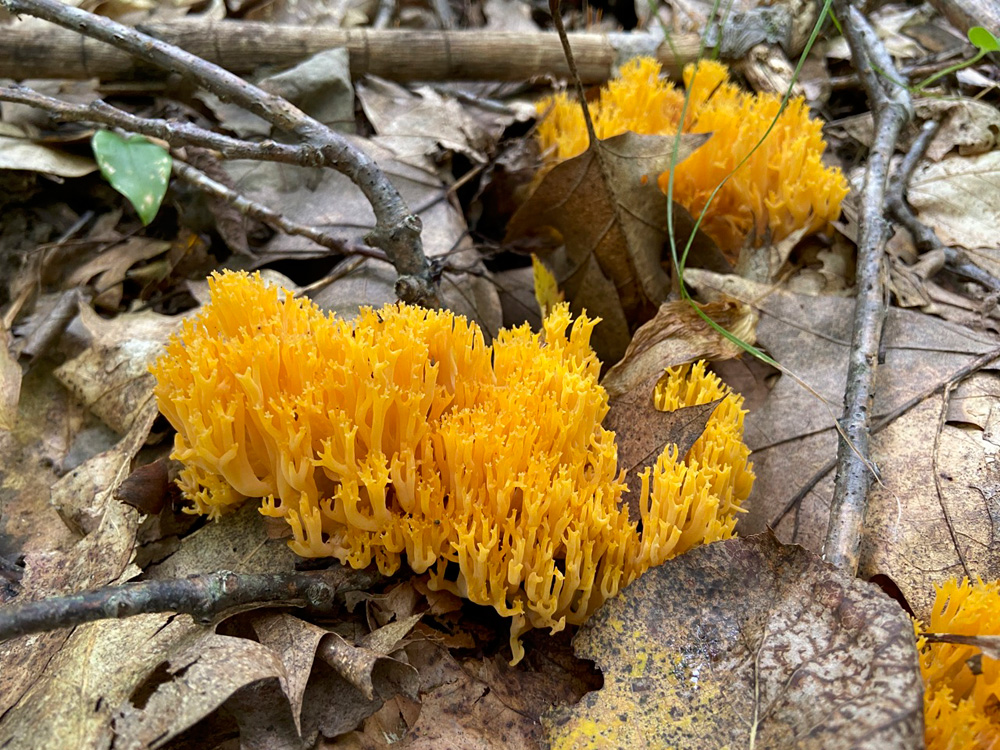
I look for mushrooms every year, yet I rarely write about them. My most recent entry on this topic was in 2013. Here we are, nearly a decade later, and the forays of the past few months have been exceptional enough to document again.
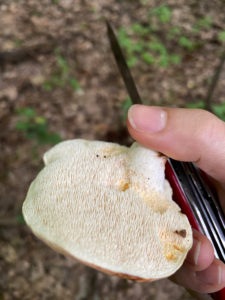
My partner and I go to the Northwoods (the Chequamegon-Nicolet National Forest) every September. Kyle grew up in the area and his parents still live there. The forest is huge, and phone reception weak, often non-existent, so looking for mushrooms feels remote and dangerous. Last year we marked a few points on a map in hopes of finding more of the same species again. The hedgehogs came up in exactly the same spot near a river. In order to approach them, we had to drive downhill on an uneven dirt road, park in some grass, and then walk down a narrower path away from civilization, with no phone reception. We came across bear scat with corn kernels in it; Kyle noted that someone was probably baiting a bear.
After approximately three hours of isolated wandering and no human contact, a man appeared in a pickup truck and told us that they were indeed baiting a bear in the area and that we ought to be careful. I instantly decided that I was done for the day. We were going to leave only an hour later anyway. Kyle wanted to stay as planned, to keep foraging. He said that black bears are exceptionally shy and afraid of people. In the event that a bear sees you, Kyle said not to run but to stand tall and make noise. And if the bear approaches you (which is extremely unlikely, he explained) just fight it—i.e. punch it in the nose. No biggie.
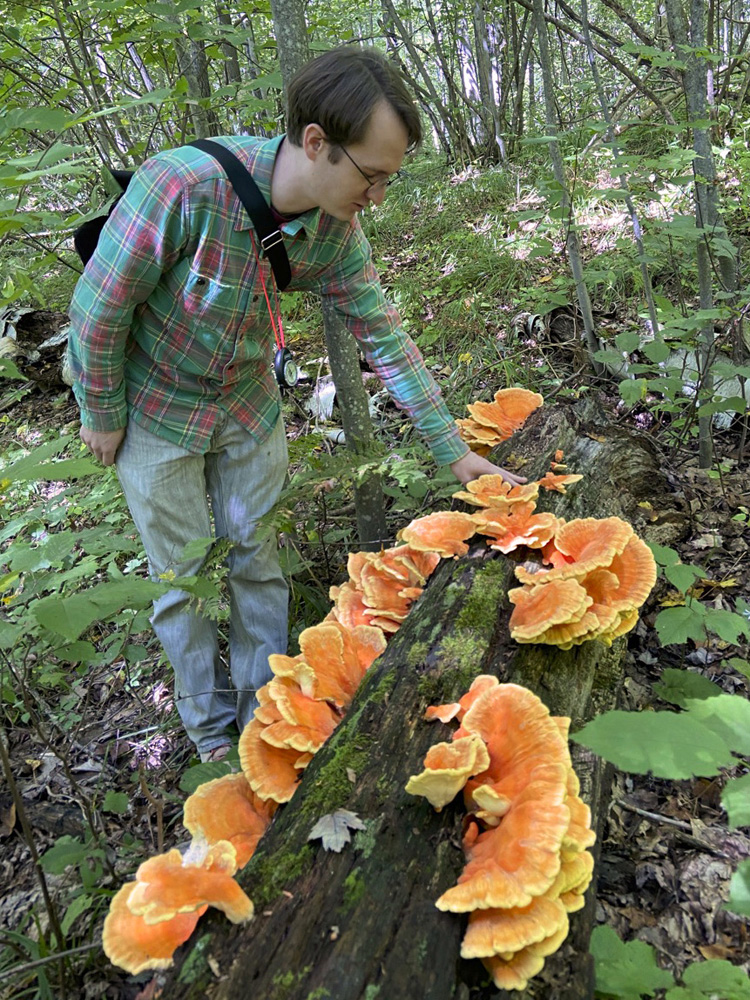
The following day we checked out another spot that was denser, more impassable—with endless prickly blackberry bushes. The path was a decommissioned and overgrown logging road. This is where we found a log of chicken mushrooms.
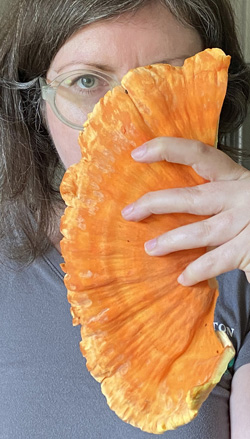
As we began collecting them, I noticed a couple of yellowjackets buzzing around my legs. One of them stung my shin, and a swarm suddenly emerged from underneath the log. I yelled and began running as fast as I could away from the log, through the undergrowth, jumping over fallen trees and branches. The wasps followed, some of them grasping onto my jacket, socks, pants. I could feel one of them sting my ankle three times. As I was running, panting and screaming, Kyle followed me, yelling “Drop your knife! Drop your KNIFE!!!” I tossed my knife and a few steps later I tripped on a branch and fell. Kyle approached and shooed away a few leftover wasps. They stung his cheek and hand. We went back to the car—about 20 minutes away—to assess the damage. I was worried about a possible allergic reaction (neither of us had phone reception and the nearest hospital was at least half an hour away). The insect stings swelled slightly and became red and painful as expected, but no allergies. After resting and calming down, Kyle made a turban out of sweatshirts and went back to the log while I waited in the car. He located our knives and belongings, and carefully collected the rest of the mushrooms as the agitated wasps buzzed around his head, warning him to back off. When we drove back to his parents’ place, we weighed the chicken mushrooms and discovered that we had collected 18 lbs from that single log.
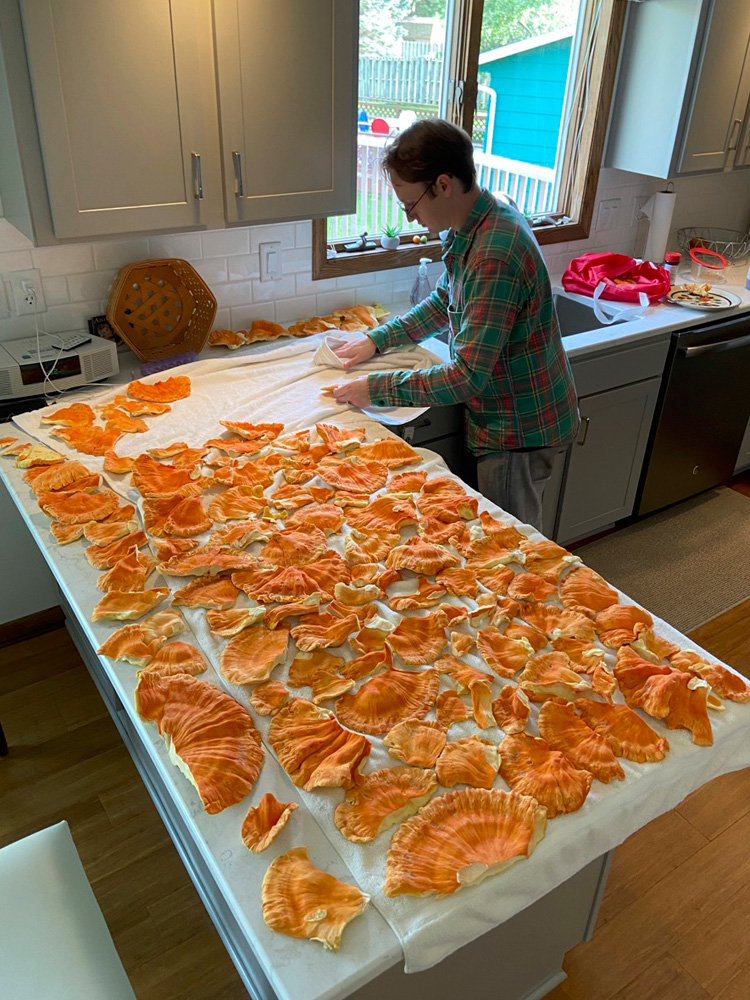
I read up on yellowjackets that evening and learned a few things about how they stage an attack. When a person is marked chemically by the first sting, all the wasps in the entire forest are able to detect and chase down the intruder depending on proximity to a nest. And the nests are underground. After the scary adrenaline-filled encounter with these insects, I was surprised to feel reverence toward them rather than animosity or fear.
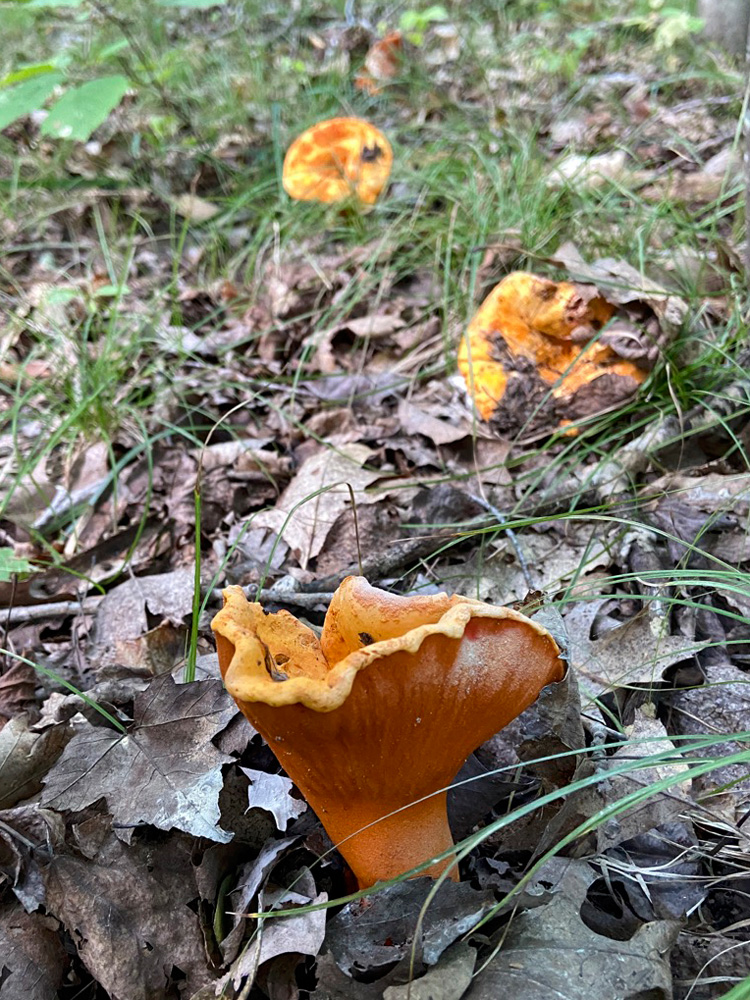
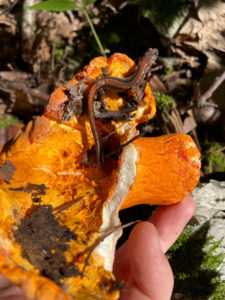
Another spot that we marked on a map last year was a dirt road lined with lobsters. These mushrooms tend to look gnarly regardless of how fresh they are, but this year they were in slightly better shape than in 2020. Kyle found a large one that he was about to put in a paper bag when I suggested to break the top open and check for leaves and dirt (the edges of the mushroom were folding outward so far that they completely closed back in on themselves). To our surprise, there was a salamander resting inside the moist mushroom. I’m glad we didn’t take this critter home.
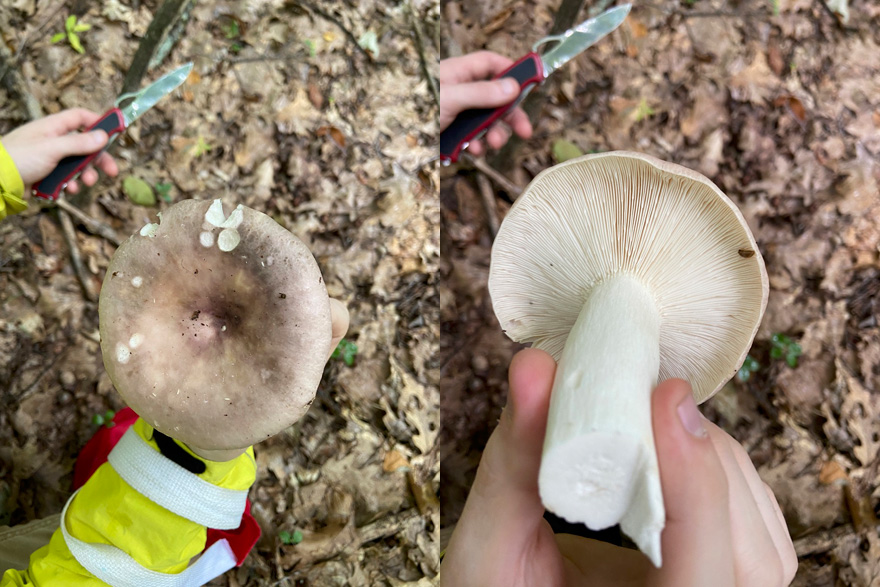
In the same area, we also found a Russula with a brownish-lilac cap. I don’t usually eat Russulas, but a friend in Chicago who is more knowledgeable and experienced gave us a positive ID based on the photographs I sent him. He said it was either R. Mariae or R. Ornaticeps. In any case, he said that all subtly lilac-colored Russulas are edible, so we went ahead and cooked it. It turns out that poisonous Russulas taste peppery, and this one had a peppery aftertaste. Through hours of frantic research (long after having consumed the large mushroom), I discovered that it was much more likely to be a R. Variata based on the frequent forking in the gills. According to one random post in a forum, the Variata appears to be an edible Russula that has a peppery aftertaste. It was enough to assure me that we were going to be okay. I also found out that the Russula genus has approximately 750 species—some edible, some poisonous. No more Russulas for me.
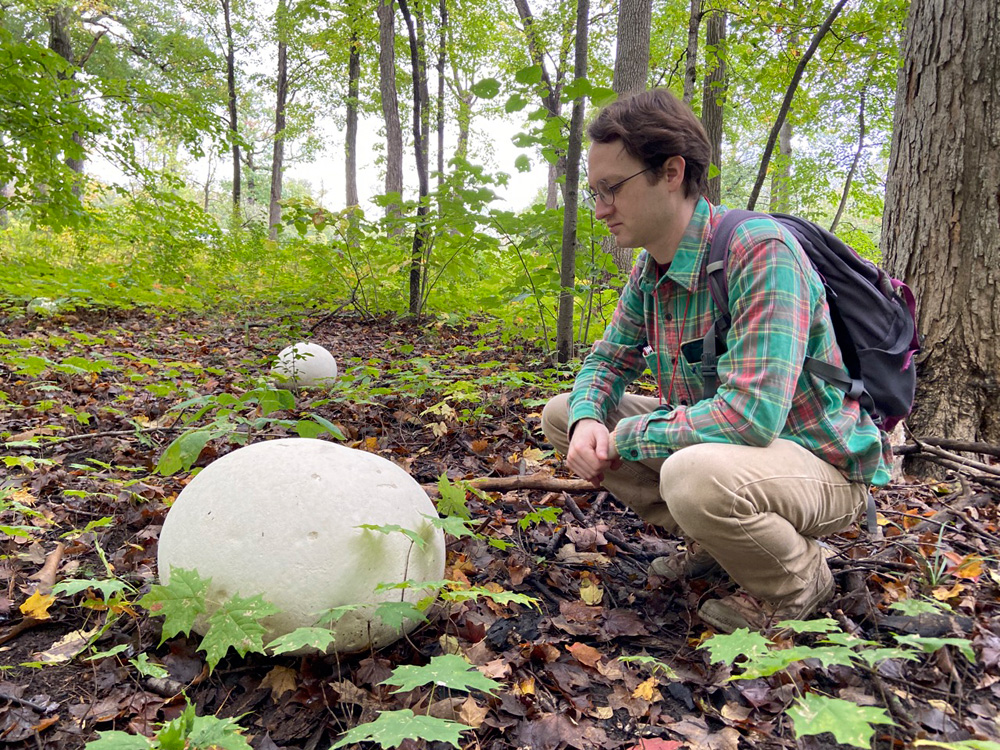
Back in Northeast Illinois, we found some monstrosities. I guess this must have been the year of the giant puffball, as we came across several patches of them in areas where we didn’t find any before. We took a “smaller” giant one and made pizzas by using large horizontal slices as the crust. Since puffballs are mostly air, they don’t release much water and there is hardly any flavor. I liken the texture of baked puffball to a raw, savory marshmallow. This makes the mushroom quite versatile as long as the toppings are good.
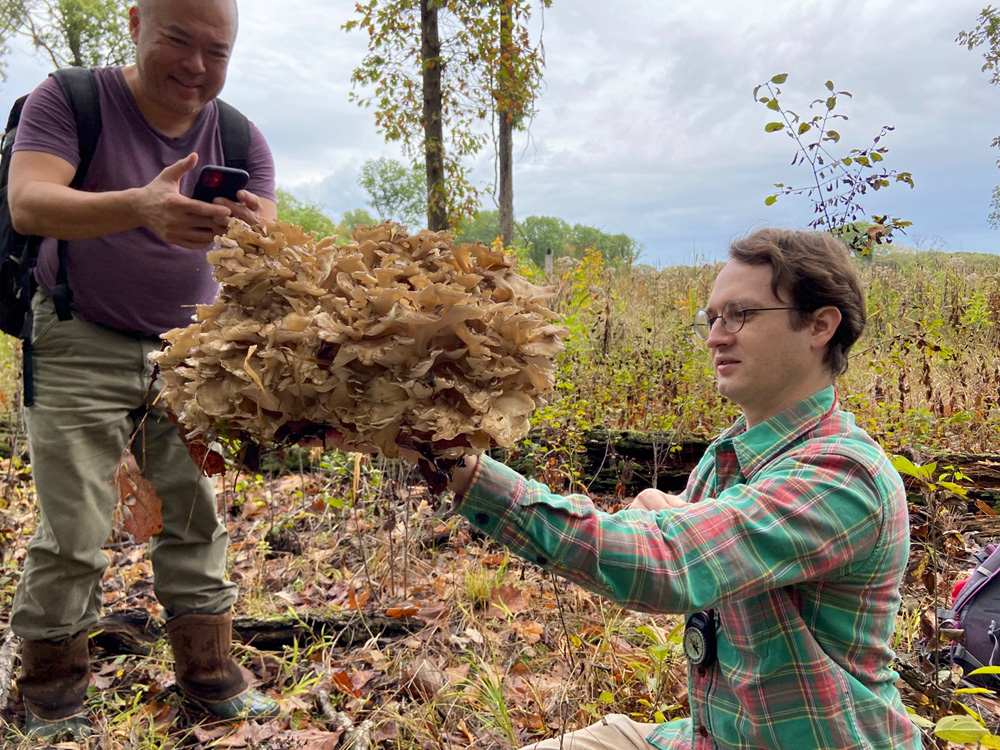
Hen of the woods is my favorite edible, and we found a few big ones this year—enough to freeze and dehydrate some for the winter. The dehydrator turned out to be a game-changer. Kyle used it to make mushroom jerky that was a hit with our foraging friends.
Finally, I’ll post images of a few unusual specimens that our group found in Michigan a month ago:
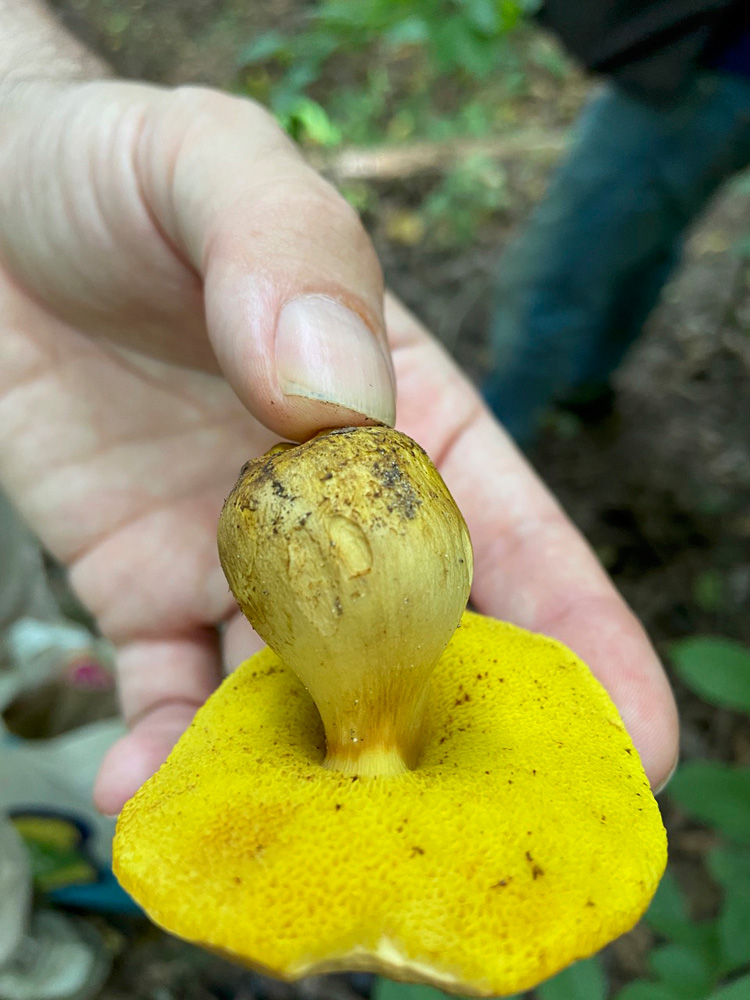
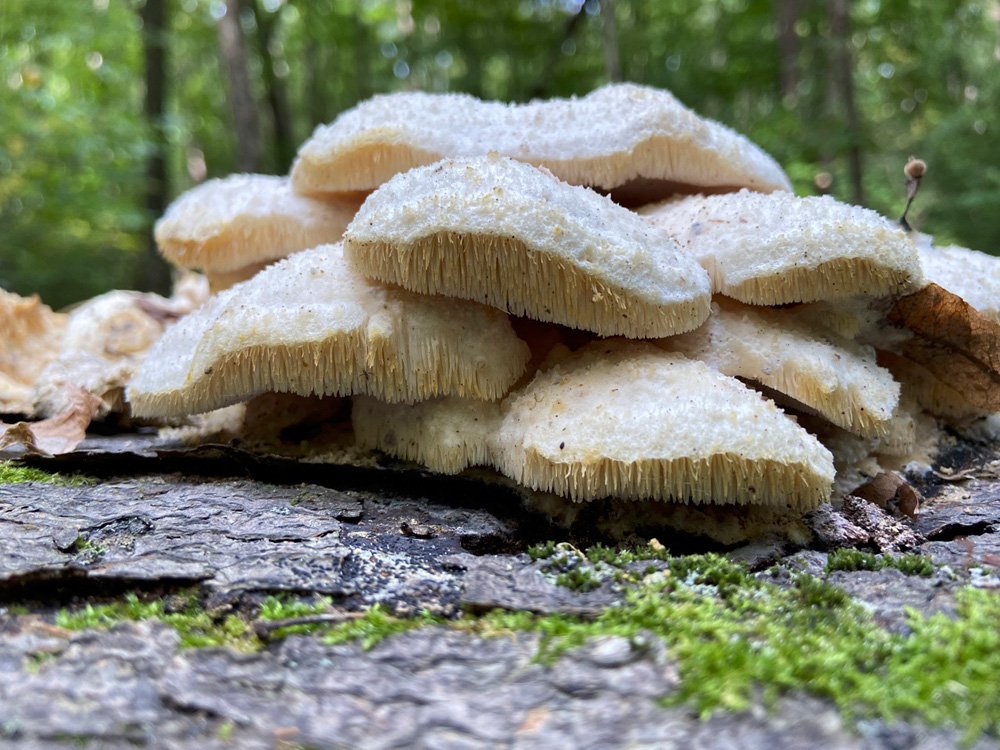
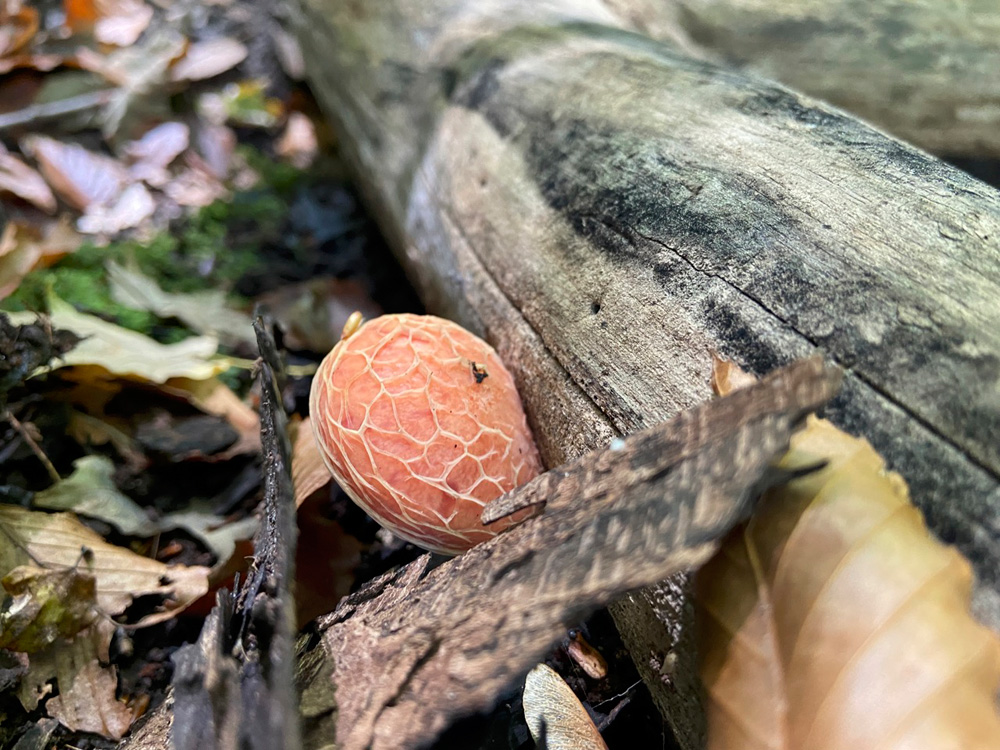
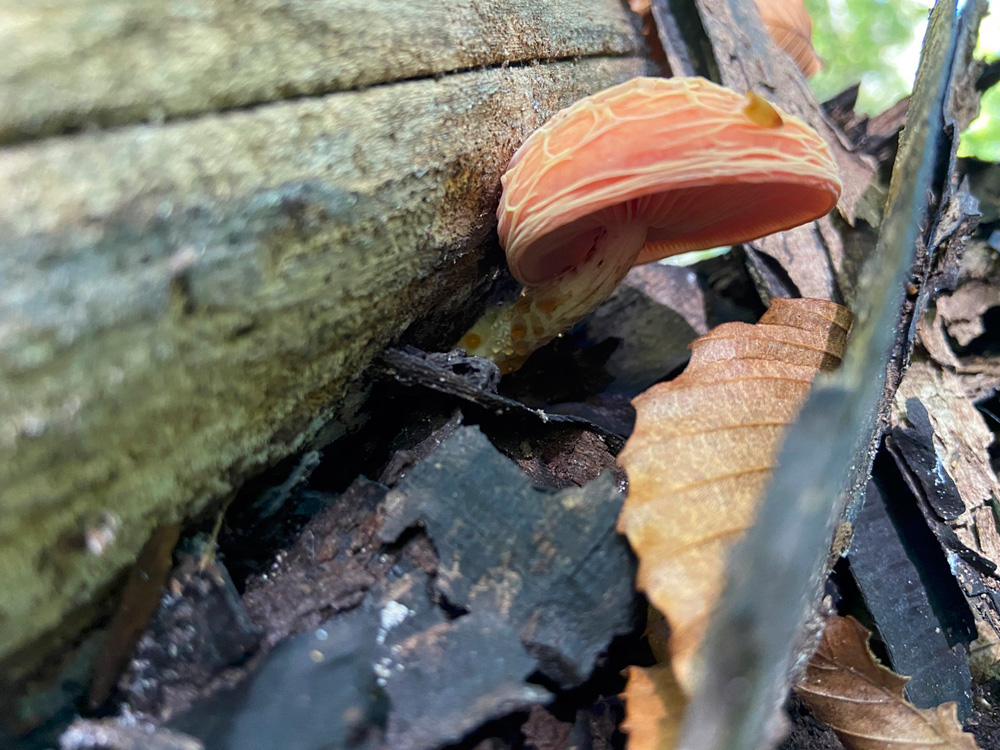
Interesting the variety of mushrooms and their beauty.